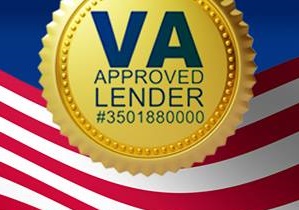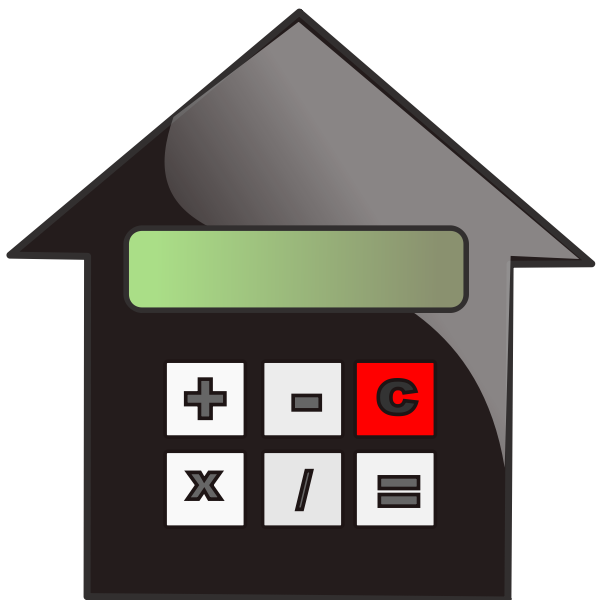Need a VA Loan for a Renovation?
We Are VA Renovation Loan Experts – Get Started Today
Start the easy application process now!
"*" indicates required fields
Or Call Now For Help!
Elevate Your Home with a VA Renovation Loan
The housing market presents some challenges for first-time home buyers or even those wishing for a larger or more updated home. For those leaving military service and looking to establish a family home, the purchase price of a home can seem out of their range.
The Department of Veterans Affairs offers veterans the option to take out a VA loan from a private lender, but did you know that you could buy a much cheaper home and fix it up with a VA renovation loan?
If you are interested in learning more or starting the VA renovation loan process, contact us by filling out the form or calling us today!

All Home Renovation Loans: VA, FHA, Conventional, and USDA Options
The perfect home, for a lot of buyers, is one that they can customize or the kind that just needs a little work. With a Renovation Loan to purchase, you can include the costs of purchasing and improvements in one loan at a reasonable rate!
In addition, Security America Mortgage offers several products to finance both the home purchase and your renovation all together in one loan with options for VA’s specifically designed for Veterans, FHA, Conventional and USDA.
What is a VA Home Improvement Loan?
VA home improvement loans are refinance loans that help you cover renovation costs to make your home more livable. These loans can also be used to refinance your current VA loan at a more competitive interest rate than your previous loan. If you have lived in the same place for a few years, but need more room or features that might help with mobility, a VA renovation loan can cover those costs and reduce your regular mortgage payments.
VA Home Improvement Loan Types
If you already qualify for a VA loan, chances are you probably qualify for a VA renovation loan to improve your home. Whether you already live in a fixer-upper or are looking for a purchase loan as well as a renovation loan, VA lenders can help you with the process so that you can start preparing for a renovation.
Here are some of the VA renovation loans available to first-time home buyers and those looking for a renovation.
VA home renovation loan
VA supplemental loan
VA energy efficient loan
There are a few requirements to meet before applying for any of these loans. All of these VA loans constitute home improvement loans and must meet the VA’s minimum property requirements for borrowers to be eligible for a VA rehab loan.
VA Home Renovation Loan
A VA renovation loan allows families and homeowners to use a mortgage loan backed by the VA to pay for repairs, improvements, or additions to their homes. It combines the purchase price of a home and the renovation costs into one monthly mortgage payment.
This process can be more affordable than purchasing a home that already meets all your expectations–older homes generally cost less than newer homes. If you’ve found a fixer-upper in the location that you want, but the house itself needs a little work, a VA home loan can add value, improve your quality of life, and help you save with all the benefits that keep monthly payments manageable.
VA Renovation Loan Requirements
A VA renovation loan assists those purchasing properties that do not meet habitability requirements at the time of closing the purchase. These VA loans are better than a VA cash-out refinance loan because they allow the homeowner to access the equity of the completed value of the fully repaired property.
The requirements for a VA renovation loan are as follows:
You must be a veteran
You must provide an accurate repair bid from a VA-approved contractor
These loans typically have limits, which depend on the VA lender. Most VA lenders keep their limits below $75,000 per loan.
The home must be a primary residence
The homeowner must hire a third-party contractor to complete the work. VA renovation loans cannot be used for one’s own projects.
Repairs must be completed within 90 days
Repairs must meet local and state property requirements
You must have a credit score that meets your VA lender’s requirements
You must have a reliable source of income
State and local requirements can include specific neighborhood and zone requirements. Improvements on a fixer-upper must also be towards making the primary residence habitable, not luxury improvements like a swimming pool.
You also can’t make a home purchase on a home that needs to have its foundation rebuilt–VA renovation loans aren’t meant for large, structural changes.
VA Supplemental Loan
If you have already taken out a home purchase loan or a regular VA loan to buy a home, you can finance home improvements with VA supplemental loans.
A VA supplemental loan can function like a home equity loan, or it can be added to an existing VA loan. Essentially, if you have already purchased a home and lived in it, a VA supplemental loan will make more sense for you and your family.
Since these loans are secondary loans, they might come with a higher interest rate. They have a different set of requirements than a VA renovation loan.
What Are the Requirements for a VA Supplemental Loan?
VA lenders that offer VA renovation loans and VA supplemental loans have some requirements.
Remaining entitlement or restoration of full entitlement. If you have a separate VA loan or a traditional VA loan, your VA supplemental loan will have a limit that is lower than your previous loan.
No luxuries. You can’t use this single loan to pay for swimming pools, barbecue pits, or anything else that might be considered inessential.
No more than 30 percent of the loan can be used for non-fixtures or replacement of home appliances, such as refrigerators, heating, or washing machines.
The home must be a primary residence
If you are applying for more than $3,500 in funds, you must provide a notice of value with a complete estimate of the repair costs.
VA Energy Efficient Loans
A VA energy efficient loan is a type of VA renovation loan that allows homeowners or those who have an existing mortgage already to make home improvements that meet energy efficiency requirements.
If you wish to invest in solar panels, insulation, windows, heat pumps, or other energy-efficient additions, this home improvement loan can cover crucial elements and enhance your property value as well.
These loans come with different requirements than the other two types of home improvement loans, and applicants will need to follow different guidelines.
What Are VA Energy Efficient Loan Requirements?
VA energy efficient mortgages (EEMS) have different requirements–they are not the same as a cash-out refinance loan or a personal loan, but rather they are meant to cover the costs of installing energy-efficient materials.
You will need to verify your income. If your VA renovation loan work costs more than $3,000, a lender will verify whether or not you make enough to cover the increased monthly payment.
You will need to pay the funding fee upfront. Unlike other VA loans, a VA energy-efficient loan requires the borrower to pay the funding fee to the VA loan program right away. Other VA rehab loans roll the funding fee into monthly payments.
You must have another VA loan in the process. Whether you have renovation loans or a VA home loan, you can’t take out an EEMS alone. You can add this kind of loan to a refinance loan or an existing loan.
You don’t need to hire a contractor. EEMS can simply reimburse you for your purchase of equipment. Unlike other VA renovation loans, you can perform these projects yourself.
What is a VA Rehab Loan?
A VA rehab loan is the same thing as a VA renovation loan. VA renovation loan lenders may refer to your loan as either a VA renovation loan or a VA rehabilitation loan, but they both work in the same way. VA rehab loans give veterans a chance to secure an affordable loan backed by the Department of Veterans Affairs.
What is the Difference Between a VA Home Loan and a VA Rehab Loan?
While both types of loans are backed by the VA and available to veterans, there are some key differences. A regular VA loan will require the home in question to meet the minimum property standards before closing, while VA renovation loans allow homeowners to complete repairs after closing.
Are There Other Alternatives to VA Rehab Loans?
There are a few alternatives to a VA renovation loan. These include:
FHA 203 k Loan
VA Cash Out Refinance Loan
Fannie Mae Homestyle Renovation Loan
These loans allow you to roll the cost of a home purchase and necessary renovations into one price, but they come with different benefits. You can also always take out a home equity loan from a different lender, but that option will need a down payment of some kind and won’t come with as many benefits as a VA loan.
Find Trusted VA Renovation Loan Lenders to Help!
The application process for a VA loan and the paperwork required to meet all the renovation loan guidelines can be difficult if you don’t have a trusted loan officer by your side.
Fortunately, Security America Mortgage can help you determine how much you need to improve your home, and can help you determine an estimate of the purchase price, the renovation price, and the value of the home after contractors have worked on it.

What are the Requirements for a VA Renovation Loan?
To get a VA renovation loan, you will have to complete the following steps:
Make sure you have a certificate of eligibility from the VA
Get preapproved for a loan from a VA lender.
Acquire estimates from a VA-registered contractor who has a VA builder ID number.
Get the home appraised by a VA appraiser before the renovations are done
Close the VA renovation loan
Hire the contractor and allow the lender to disburse the funds accordingly.
Have a VA appraiser view the final product and make sure the fixer-upper complies with VA requirements.
FAQs
What Kind of Repairs Are Covered by VA Renovation Loans?
Renovation loans from the VA can cover a wide scope of improvements, including roof repairs, foundation repairs, flooring repairs, plumbing fixes, HVAC systems, electrical issues, and even additions that one might make because of a disability.
What Are the Benefits of a VA Rehab Loan?
VA loans tend to offer many benefits that other loans might not offer, and a VA home improvement loan comes with its own unique benefits. These include:
No down payment is needed: However, you might want a down payment to lower the monthly payment that comes with a VA home improvement loan.
Affordable interest rates: VA financing always comes with attractive interest rates that are typically better than those that come with a loan from another lender.
No private mortgage insurance: If you take out a single VA loan for a home purchase and for renovation, you won’t have to pay private mortgage insurance.
There are many repayment terms: including 10 years, 15 years, 20 years, 25 years, and 30 years. These payments can be stretched out over time while you enjoy a newly renovated home right away.
You can borrow the full completed value of the home before the renovations are completed: Make sure to get a VA appraiser to confirm the full value of the property so that you can get the additions you need to cover the cost of your project.
Downsides to a VA Renovation Loan
Some of the downsides to having a VA rehab loan include the limited budget that may come with these repairs and the fact that contractors cannot perform repairs that the lender does not approve. This can limit the scope of your repairs.
In addition, full house remodels are not feasible with a VA loan, since those typically cost more than the VA loan limits can cover. It may be better to apply for a VA construction loan if you are looking to build a new home, as opposed to getting a renovation done. If you need large additions, a new second level, or other large assets, a VA loan can’t help you.
However, with a VA home loan, you do get more options and you can easily pay off your loan and establish a home equity line with all the benefits that go into that loan.
Where Can I Get a VA Renovation Loan?
A lender who offers VA renovation loans can tell you that most loans are available throughout the United States. However, some areas might have geographic restrictions that make them ineligible, such as Hawaii.
Who Can I Hire to Complete My Renovation?
The VA has guidelines on who to hire for your renovation if you have a VA renovation loan. Homeowners must only use one contractor to complete the job within four months.
This contractor must already be registered with the VA as a trusted contractor, which is important since that contractor will be performing a VA appraisal that must be approved by the lender. As the VA appraiser, the contractor will determine what needs to be done to the home to make it livable.
Before making a home purchase, make sure to find a contractor who can help you fix a home to make it habitable again. Some major remodels are not covered by these kinds of loans, so before you apply, make sure your planned renovations fall under the recommended guidelines for a VA renovation loan. Security America Mortgage generally recommends keeping renovations under $35,000.
Your general contractor must also be covered by sufficient insurance and carry a general insurance liability policy to avoid complications or long-term issues with a renovation.
Any renovations that require more than $200,000 will need a review, while any renovations greater than $50,000 will require a Federal Housing Administration 203k HUD consultant.
Call Security America Mortgage Today!
Security America Mortgage makes it easy for veterans to get the VA loans they need with all the benefits they deserve–including no down payment.
If you are eligible for a VA loan, and you’d like to renovate your primary residence, check out our VA mortgage calculator to get a loose estimate of how much you will pay over time. Then give our loan officers a call and see how much you can save with a VA loan!
We are dedicated to
serving Those who served.



